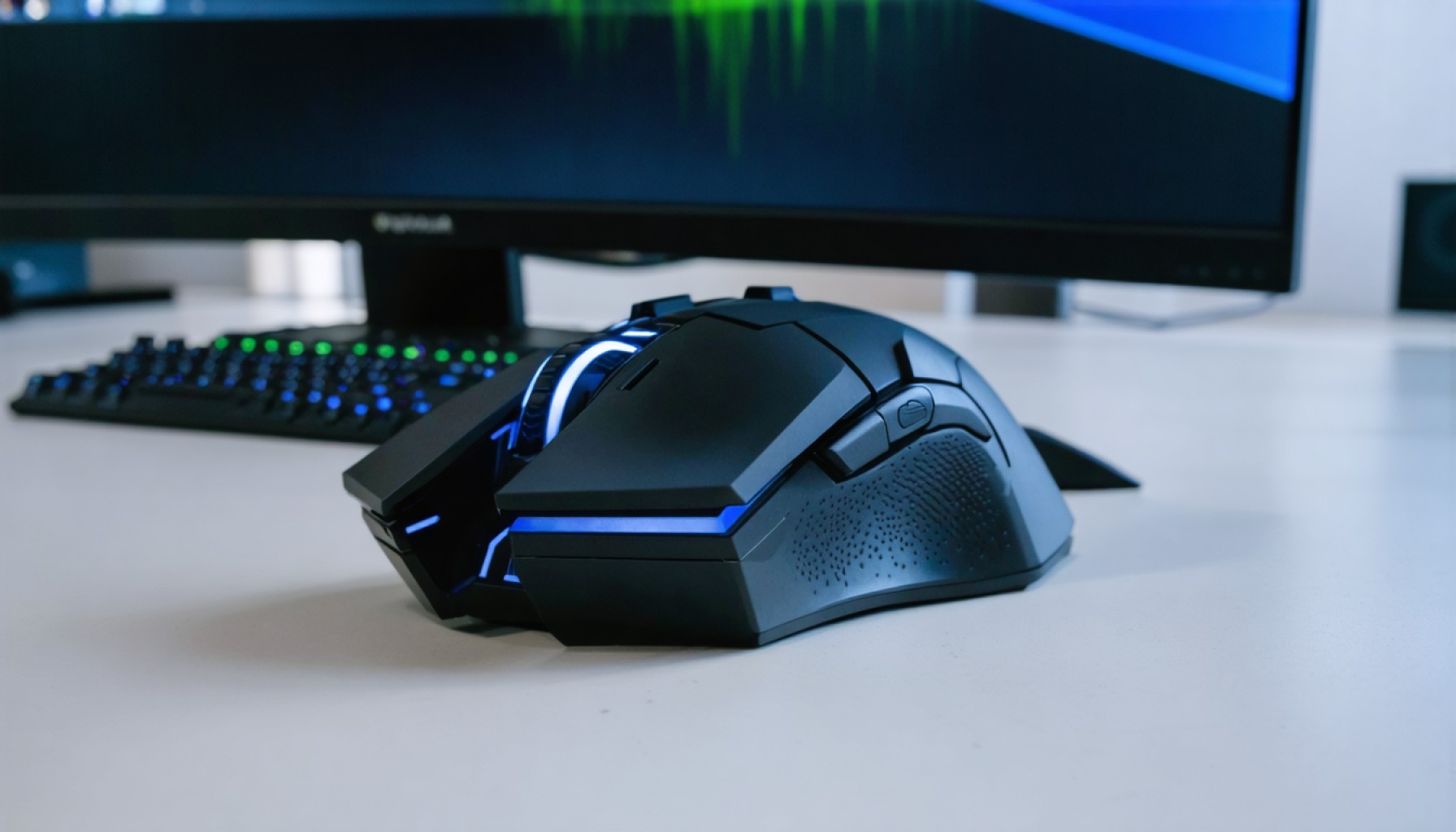- NVIDIA, originally a cornerstone of gaming with its GPUs, is now a leader in AI and machine learning.
- Recent RTX 50 series releases, including the RTX 5090 and RTX 5080, faced backlash from gamers due to technical issues like black screens and unstable drivers.
- NVIDIA has acknowledged these faults and is working on solutions via software updates, though gamers remain skeptical and anxious.
- Some RTX 50 units reportedly have fewer ROP units and faulty power cables, compounding gamer frustrations.
- NVIDIA’s strong AI focus prompts uncertainty about its future relationship with the gaming community.
- This pivotal transition asks if NVIDIA can balance new AI ambitions with its gaming heritage, crucial for maintaining gamer loyalty.
Once upon a time, a trio of Silicon Valley engineers embarked on a quest to transform the visual landscape of personal computing. This vision birthed NVIDIA, a company whose graphics processing units (GPUs) became the lifeblood for gamers worldwide. These GPUs, with their mesmerizing ability to render virtual worlds in breathtaking detail, fostered a passionate community that awaited each new release with bated breath.
Fast forward to the present, and the stage has shifted. NVIDIA, now a titan in the tech universe, finds itself angled toward the horizon of artificial intelligence (AI), mesmerized by the tantalizing prospects offered by data centers and machine learning. Their stock prices soar on the wings of AI, yet the bedrock of their success—the gamers—has grown increasingly uneasy.
The release of the highly anticipated RTX 50 graphics series, championed by models like the RTX 5090 and RTX 5080, was meant to be a milestone. However, it has brewed a storm of frustration among NVIDIA’s traditional allies: the gamers. Reports of black screens, unstable drivers, and unexplainable crashes have flooded forums such as Reddit, leaving thousands at a loss. Many felt as though they had been handed a beautifully crafted blade, only to discover it was blunt and unwieldy.
NVIDIA has acknowledged some of these technical missteps publicly, promising solutions through software updates. However, the gaming community watches with anxiety as updates trickle forth, wondering if swift responses will quell the uproar before dissatisfaction sours into discontent. Astonishingly, some RTX 50 units appear flawed from the get-go. A small percentage reportedly shipped with fewer ROP units, critical for rendering images smoothly. Worse, tales of melted power cables have surfaced, damaging hardware, creating an inferno of complaints online.
Amidst these trials, NVIDIA’s eye remains firmly fixed on its AI ambitions. Much like Microsoft before them, NVIDIA seeks to diversify their portfolio, pursuing sectors promising unprecedented growth. Nonetheless, their AI odyssey leaves a lingering question: What about the gamers?
In this brave new world of AI dominance, the future role of gamers at NVIDIA remains uncertain. Will they be sidelined, or can they still hold their ground? As GPU releases persist, many find it arduous to see NVIDIA as the steadfast ally they once knew. The very players who were NVIDIA’s heartbeat now feel overshadowed by artificial luminescence.
Herein lies the critical takeaway: As NVIDIA ascends to AI supremacy, will it risk alienating the very community that brought it here? This pivotal moment asks whether NVIDIA can balance its burgeoning ambitions with the heritage that made it a household name. As the narrative unfolds, the answer will shape the soul of NVIDIA—forging a future where humanity and machines can either harmonize or clash in the realms of innovation and camaraderie.
NVIDIA’s Dual Path: Balancing Gaming Heritage with AI Ambitions
Understanding the Revolution NVIDIA Sparked in Computing
NVIDIA’s journey from pioneering graphics processing units (GPUs) for gaming to its current prominence in artificial intelligence (AI) signifies a remarkable evolution. Originally fueling the engines of virtual landscapes for gamers, NVIDIA GPUs became synonymous with high-performance gaming. Yet, NVIDIA is now realigning its focus toward AI, data centers, and machine learning, creating tension with its original gaming audience. Here’s an exploration of NVIDIA’s current trajectory, ongoing challenges with its latest products, and insights into its potential future.
Pressing Concerns for Gamers: Technical Issues and Product Flaws
The newly launched RTX 50 series, including the RTX 5090 and RTX 5080, was anticipated to revolutionize gaming graphics once more. Instead, these models have encountered significant setbacks:
– Technical Flaws: Numerous users have reported issues such as black screens, unstable drivers, and crashes. This has sparked discussions on forums and platforms such as Reddit, where gamers share experiences and troubleshooting tips.
– Hardware Deficiencies: A small number of units reportedly lack sufficient Raster Operations Pipelines (ROPs), crucial for image rendering, compromising performance. Additionally, power cable malfunctions have even led to instances of melted hardware, raising safety concerns.
– Software Updates as a Solution: NVIDIA has publicly acknowledged these issues and is deploying software updates to address the problems. However, the process is slow, and the uncertainty is unsettling for gamers.
Market Forecasts & Industry Trends: The AI Frontier
NVIDIA’s pivot towards AI is strategic, capitalizing on the thriving demand in sectors like cloud computing, autonomous vehicles, and robotics. Here’s a brief market overview:
– AI and Data Centers: As companies increasingly adopt AI technologies, the need for powerful hardware accelerates. NVIDIA’s GPUs are central to this growth, which is reflected in its soaring stock prices.
– Diverse Competitive Landscape: While NVIDIA remains a leader, competition from companies like AMD and newcomers in AI hardware may influence future strategies and market share.
Real-World Use Cases: How Gamers Can Adapt
While gamers face challenges, there are ways to mitigate immediate issues with the RTX 50 series:
– Driver Rollbacks: Reverting to previous driver versions might stabilize system performance until more reliable updates are available.
– Custom Cooling Solutions: To prevent overheating and power cable issues, investing in enhanced cooling components could safeguard systems against hardware failures.
Pros & Cons Overview: Navigating NVIDIA’s Dual Focus
Pros:
– Advanced AI Capabilities: NVIDIA’s GPUs are vital in AI research, offering unmatched power and efficiency in this arena.
– Legacy of Gaming Excellence: When functioning correctly, NVIDIA’s GPUs deliver outstanding performance for next-gen gaming and beyond.
Cons:
– Potential Neglect of Gamer Concerns: AI ambitions may overshadow immediate technical issues gamers face.
– Hardware and Software Instabilities: The latest product flaws have tempered initial enthusiasm amongst core gaming enthusiasts.
Actionable Recommendations for Gamers
– Community Engagement: Stay connected with fellow gamers and NVIDIA’s customer support forums for the latest updates and solutions.
– Exercise Caution with New Purchases: Consider waiting for resolved issues in future iterations of the RTX series or opt for alternative models verified for stability.
Conclusion: Will NVIDIA Harmonize or Prioritize?
NVIDIA stands at a crossroads, tasked with the challenge of balancing its pioneering legacy in gaming with pioneering pathways in AI. Its decisions will shape its place in both realms—will it remain a cherished ally to its gaming roots or redefine itself as a leader solely in AI? Time will tell, and only a strategic balance will sustain NVIDIA’s dual identity.
For more information on NVIDIA’s latest announcements and products, visit the NVIDIA website.










